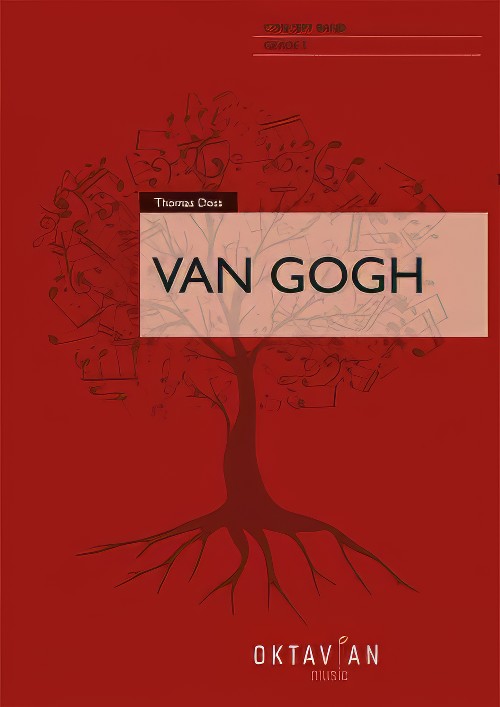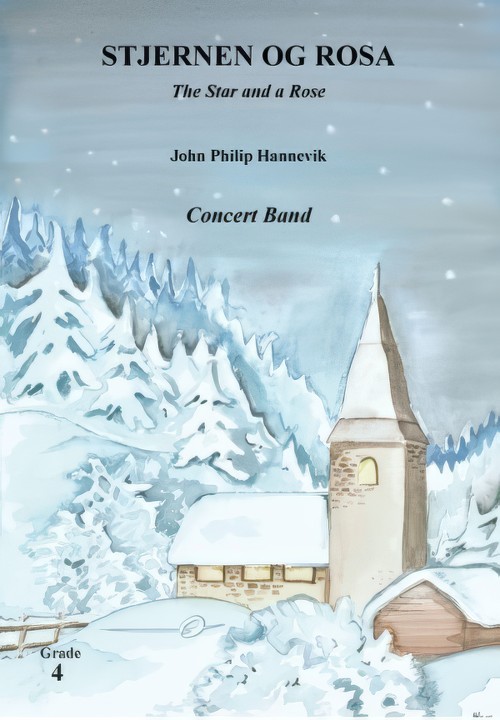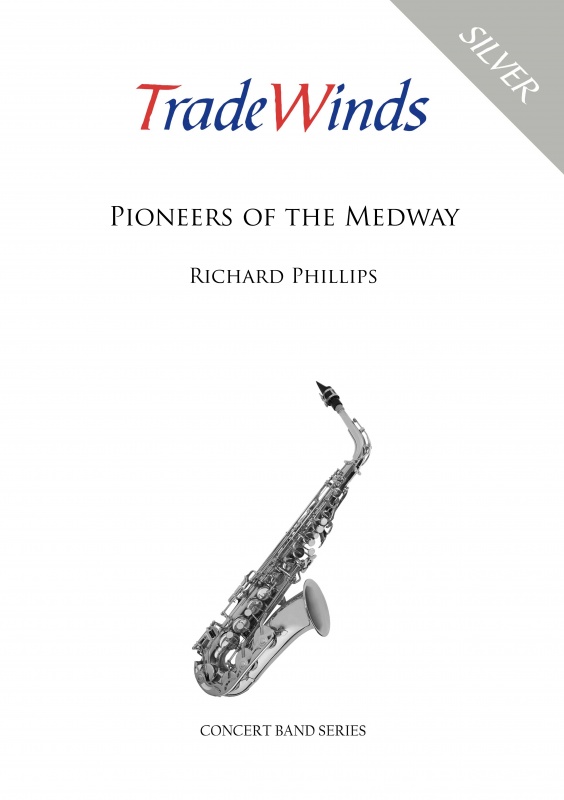Results
-
 £141.99
£141.99A Tribute to Ray Charles
Ray Charles (1930-2004) was a multitalented and pioneering American pianist and soul singer who became very popular in the late fifties, and remained respected for his music in the decades that followed. By incorporating gospel, jazz, blues, and big band elements, he helped shape the sound of rhythm and blues, and brought a soulful sound to everything from country music to pop standards. Ray Charles embodied the American dream, starting out a poor, blind boy from the southern United States and becoming an international music phenomenon; his nickname was "the Genius" for a good reasonIn this arrangement for concert band, Peter Kleine Schaars presents five of the songs thatcontributed to Ray Charles' fame: I Can't Stop Loving You, Hit the Road Jack, Georgia on My Mind, Hallelujah I Love Her So, and Unchain My Heart.
Estimated dispatch 7-14 working days
-
 £109.99
£109.99Andreas Gabalier in Concert
Andreas Gabalier is one of the most popular Austrian folk singers of his generation. In 2012, he won an ECHO music award and has also won the Amadeus Austrian Music Award twice. This medley contains 'I sing a Liad fr di', 'So liab hob i di', 'Amoi seg' ma uns wieder', 'Zuckerpuppen' and 'Go for Gold'.
Estimated dispatch 7-14 working days
-
 £57.50
£57.50Selections from A Hard Day's Night - John Lennon
From the classic movie about the Fab 4, Michael Sweeney has written a new easy medley that includes four of the mega-hits from this pop culture phenomena. Includes: A Hard Day's Night, And I Love Her, Can't Buy Me Love, and If I Fell.
Estimated dispatch 7-14 working days
-
 £64.99
£64.99The Beatles - 1964!
The Fab Four exploded on the American music scene with a banner year of hits in 1964. This medley of Beatle favorites includes I Want to Hold Your Hand, And I Love Her and Twist and Shout. It was a good year!
Estimated dispatch 7-14 working days
-
 £56.06
£56.06Suite - A Renaissance Christmas (Wind Band) Kevin Norbury
VIEW SCORE PDF This magnificent festive suite was written by Kevin Norbury for the Pierre Elliott Trudeau High School Wind Symphony and features three well known carols set in a Renaissance style. Three contrasting movements comprise the work: i. Processional (Personent hodie - On this day earth shall ring) This is a short piece imagining a torchlight Yuletide procession (perhaps bearing the traditional roasted wild boar), using a well-known Christmas melody from the large collection of music compiled in the 16th century called Piae Cantiones (1582). The tune is presented twice with accompanying, related melodic material. ii. Pastorale (Quem pastores laudavere - Shepherds sang their praises o'er him) This is a 14th-century melody which was originally collected by Michael Praetorius at the end of the 16th-century. The treatment throughout is very lyrical without overly complex harmonies. The melody is heard three times with brief linking episodes and a short coda. iii. Celebration! (In dulci jubilo - In sweet celebration - Ding-dong merrily on high) This magnificent 13th-century melody was also a part of Michael Praetorius's collection. It is traditionally associated with the words 'Good Christian men, rejoice!' The opening is a straight transcription of the great chorale prelude for organ by J.S. Bach. After the grandeur of the opening, the tune is heard in more of a 'folky' style. A lot of related melodic material is then presented before the tune Ding-dong merrily on high is heard. After another episode of previously used music In dulci jubilo reappears in a joyful conclusion to the piece. Sheet music available from : UK: www.wind-band-music.co.uk USA: www.solidbrassmusic.com Difficulty Level: Medium Instrumentation: Piccolo Flute Oboe Bassoon Clarinet in Bb 1-2 Bass Clarinet in Bb Alto Saxophone in Eb 1-2 Tenor Saxophone in Bb Baritone Saxophone in Eb Trumpet in Bb 1-2 Horn in F 1-2 Trombone 1-2 Bass Trombone Euphonium Tuba Double Bass Timpani Glockenspiel Tubular Bells Tambourine Snare Drum Tenor Drum
In stock: Estimated dispatch 1-3 days
-
 £279.99
£279.99Van Gogh (Concert Band - Score and Parts) - Doss, Thomas
This composition is not a work inspired by the life of the famous painter, but rather an attempt at a pictorial immersion into his world. In addition to Van Gogh's character and tragic life, the technique he employed to create his works, the bright colours of his paintings and his view of nature served as inspiration for this musical work. Point by point, stroke by stroke, Van Gogh brought his own world to life on canvas.On the life of Van Gogh: The Dutch artist Vincent van Gogh was one of the most important pioneers of Modernism, despite being relatively unknown during his own lifetime. As an artist, he chose a life of poverty and seclusion. From today's perspective, his important woks were created from 1880 onwards, when he had already more or less succumbed to madness. While his earlier works could still be classed as contemporary, he matured into a pioneer of Expressionism with his later work indicating an increasing self-awareness. He was just 37 years old when he died but he created over 750 paintings and 1600 drawings in the last ten years of his life.The structure of the work:Start: Brushes and Paints: Van Gogh retired to Arles in southern France where he found his artistic home. The colours and flowering gardens of this landscape awakened in him an unbelievably great creative power.A: A Picture Comes into Being: Van Gogh's psychotic episodes and bouts of depression did not stop him from painting wonderful pictures. Hardly anyone recognised his genius during his lifetime, on the contrary, he often felt misunderstood.C: Paris - Arles: In Paris (from 1886), Van Gogh became inspired by the French art scene. His works found few takers, however. He met and befriended the painter Paul Gauguin, but the lack of success made Van Gogh short tempered, and he began to drink. Eventually, he moved from Paris to Arles in the south of France to establish an artists' collective with Gaugin. Within a few weeks, the two got into such a violent argument that Van Gogh attacked his friend with a knife. The friends parted ways and afterwards Van Gogh cut off his right ear. In 1889 he voluntarily admitted himself into a mental hospital at St. Remy, suffering from hallucinations and fearing that he would lose his mind.G: The Starry Night One of his most famous paintings, created in 1898.H: Death and Brotherly Love Vincent van Gogh accepted an invitation to Auver-sur-Oise in 1890. This was one of his most intensive creative periods. He also went there for treatment, but his mental state hardly improved. After an extended walk, he injured himself fatally with a pistol under mysterious circumstances. Not even to his beloved brother Theo, who had supported him all his life, did he reveal on his deathbed how the accident had occurred.J: Art Market Today, Van Gogh's paintings are among the most expensive paintings on the art market. How ironic, given that he could hardly sell a painting during his lifetime. "I put my heart and soul into my work and lost my mind in the process." (Vincent van Gogh)Duration: 13.15
Estimated dispatch 7-14 working days
-
 £122.20
£122.20Stjernen og Rosa (The Star and a Rose) (Concert Band - Score and Parts) - Hannevik, John Philip
The Star and a Rose is a big-scale Christmas piece for band, featuring four seasonal chorales.The first is a Gregorian-like chant Hodie Christus natus est.In this section of the piece, a soloist can be placed away from the band, maybe on a gallery. The soloist can be a tenor instrument, maybe trombone, or you can feature a vocal soloist. After this, the music leads us on to the old German Christmas chorale Lo, how a rose e'er blooming. This song is given a fairly rhythmical treatment, but make sure that the melody is presented in a cantabile style. An interlude follows, before the piece presents one of the most used and loved Scandinavian Christmas chorales, Mitt hjerte alltid vanker (My Heart will always wander), composed by the Danish bishop Hans Adolph Brorson around 1732. This song is building towards a climax, before the solo horn brings it all down to the Stable view described in the lyrics. Then comes a transition that brings us in to the final section of the piece, which presents the international Christmas Carol Adeste Fideles. As many will notice, I have borrowed a section from David Wilcocks majestic harmonization towards the end.The title of the piece has its background form the lyrics in My heart will always wander, where the text speaks about the stars in the sky. But also in the Latin text for Adeste Fideles: Stella duce, Magi, Christum adorantes. The Rose is of course from the lyrics in the chorale Lo, how a Rose.Duration: 10.30
Estimated dispatch 7-14 working days
-
 £73.00
£73.00S.O.S. (Concert Band - Score and Parts) - Kjaernes, Bjorn Morten
When the publisher asked me to make an arrangement of an ABBA tune, S.O.S. was the first song I thought of. Its introduction and melody are well suited to play for Wind Band. Admittedly, the key had to be shifted to make it sound good for this instrumentation. To me, this is nostalgia, while for others, the Mamma Mia movie/show will be what they associate with this wonderful song. Apart from a few medleys, few of ABBA's songs are available to Wind Band. So, it was very fun to work on this classic.The arrangement is made quite simply to fit many sizes of bands. Technically, it is also relatively simple both in range and rhythm. As you can see, there are many ways to adjust this arrangement to your own ensemble. Bring out melody lines and the bassline, and a lot is done. If needed, simplify to make it sound nice.Get creative and have fun!- Bjorn Morten KjaernesDuration: 3.30
Estimated dispatch 7-14 working days
-
 £64.95
£64.95Pioneers of the Medway (Concert Band - Score and Parts) - Phillips, Richard
The Salvation Army Band in my home town of Chatham, part of a conurbation of 5 towns in the South East of England known as the Medway Towns, celebrated their 135th anniversary in 2016 and this piece was composed as part of those celebrations. I suppose to some degree all composers and lyricists are pioneers, always striving to write something different and new. Well, there has been a number of 'creatives' who at one time or another have been members of the Chatham Corps and this piece includes songs from some of those. The opening motif is based on the 1st 3rd and 5th notes of the scale and after a short 'fanfare-like' introduction the tune of Blacklands (Ray Steadman-Allen) is heard in 4/4 time. This is followed by a song from Ray Jones, a former Bandmaster of the Corps entitled 'On resurrection day', a song for children's voices published in 1971 and for mixed voices in 2009. Rosemary Steadman-Allen's 'To know and do thy will' is at the heart of the link into 'Everywhere', a new setting of John Gowans' words by Andrew Maycock (both former members) which is proving to be very popular at the moment. Finally, an arrangement of this composer's setting of 'Praise the Lord' is used to bring this piece to its conclusion. It was first performed on October 1st 2016 by the Chatham band under the leadership of Bandmaster Ray Maycock.
Estimated dispatch 7-14 working days
-
 £12.95
£12.95Pioneers of the Medway (Concert Band - Score Only) - Phillips, Richard
The Salvation Army Band in my home town of Chatham, part of a conurbation of 5 towns in the South East of England known as the Medway Towns, celebrated their 135th anniversary in 2016 and this piece was composed as part of those celebrations. I suppose to some degree all composers and lyricists are pioneers, always striving to write something different and new. Well, there has been a number of 'creatives' who at one time or another have been members of the Chatham Corps and this piece includes songs from some of those. The opening motif is based on the 1st 3rd and 5th notes of the scale and after a short 'fanfare-like' introduction the tune of Blacklands (Ray Steadman-Allen) is heard in 4/4 time. This is followed by a song from Ray Jones, a former Bandmaster of the Corps entitled 'On resurrection day', a song for children's voices published in 1971 and for mixed voices in 2009. Rosemary Steadman-Allen's 'To know and do thy will' is at the heart of the link into 'Everywhere', a new setting of John Gowans' words by Andrew Maycock (both former members) which is proving to be very popular at the moment. Finally, an arrangement of this composer's setting of 'Praise the Lord' is used to bring this piece to its conclusion. It was first performed on October 1st 2016 by the Chatham band under the leadership of Bandmaster Ray Maycock.
Estimated dispatch 7-14 working days
